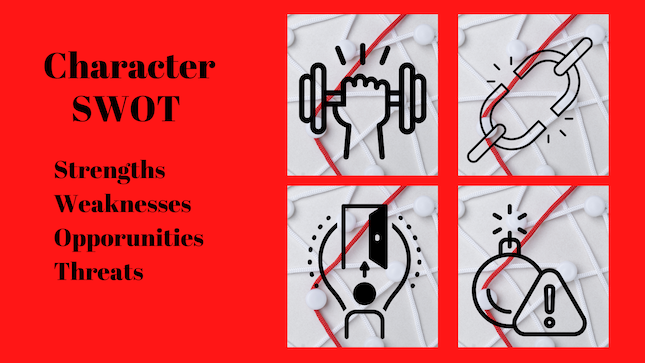Perfecting the Mystery Novel’s Second Half Funnel

The mystery novel captivates with intricate plots, fascinating characters, and unexpected twists that challenge the reader’s intellect and intuition. You are responsible for weaving an intricate narrative to achieve this dramatic effect, particularly in the novel’s second half, where the plot must crescendo its ultimate climax and resolution.
In order to be a skilled craftsman, adopt a strategic approach and an unwavering commitment to artful narrative structure.
Now your detective sifts through all the information they gathered in the first half, slowly funneling down to discovering the truth of what happened and exposing the real villain.
Unmasking the Secrets of the Second Act
As you move past the midpoint, ensure that your audience remains invested in the twisting narrative that has brought them to this pivotal moment. To successfully maneuver this intricate pathway, familiarize yourself with key concepts of narrative progression, plot structure, and the themes that dominate the ever-evolving landscape of the story.
In the story’s first half, unexpected events, startling discoveries, and suspicious activities conspired to create an atmosphere of tension and intrigue. You’ve raised a variety of questions for your detective and your reader.
Now it’s time to revisit these revelations, extracting their essential elements to propel the narrative forward. Analyzing the web of connections you wove, strike a delicate balance between the familiar and the unknown, creating a sturdy bridge between the two halves of your mystery.
Poised at the halfway point, it’s time to dig deeper into subplots, major themes, and unresolved conflicts that have tantalized our readers so far. Each of these elements serves a distinct purpose in driving the story toward its ultimate resolution. Examining these threads carefully determines which ones will impact the outcome most and which require further development in the second half.
Now that you have laid the foundation for your mystery novel’s second half, it’s time to delve deeper by exploring the techniques to bring the looming resolutions, twists, and turns to life.
Whittling the Whodunit: Mastering the Art of Suspect Elimination and Plot Refinement
Wielding the art of suspect elimination and plot refinement is crucial as the plot develops. This technique serves as a master key to delivering a cohesive Act 3, leading toward the resolution.
Let’s walk through techniques to use to whittle the suspects, examining all the information your detective gleaned from before.
In the process of developing a captivating plot, the art of suspect elimination and plot refinement is crucial. These techniques hold the key to constructing a seamless Act 3 and ultimately reaching a satisfying resolution.
First, it is essential to identify and eliminate red-herring suspects who serve as mere distractions. These false leads can lead the plot astray and hinder progress. To eliminate these red herrings, follow a systematic approach.
Establish criteria to determine the plausibility of each suspect. Scrutinize their motives, ensuring that each suspect has a believable reason for committing the crime. Next, verify their opportunity by investigating whether they had the means and chance to carry out the act. Last, cross-reference their behavior and statements with the established plot, ensuring consistency throughout. This process of evaluation will enable you to separate the true culprits from the distractions.
To further unveil the true nature of false suspects, utilize various techniques. Dive into alibis, seeking irrefutable evidence proving a suspect’s innocence or contradicting their claims. Encourage confrontations between the protagonist and suspects, allowing inconsistencies or falsehoods to surface. Gradually expose hidden connections or relationships that undermine a suspect’s plausibility. These techniques will unveil the true culprits, leading the investigation closer to its resolution.
Refining the investigation process is equally important to ensure progress. Focus on the most relevant clues and evidence, setting aside the less significant details. Prioritize significant clues over others, guiding the protagonist’s attention towards the most valuable leads. As the story progresses, encourage re-examination of existing evidence with fresh perspectives or newfound insights. The protagonist’s deductive skills are essential in interpreting vague or ambiguous clues and piecing together the puzzle that unfolds.
In order to add depth and complexity to your narrative, depict the protagonist’s increasing expertise and deductive abilities. Showcase their growth throughout the story as they refine their investigative skills. Foster collaboration among the characters, allowing each member to contribute their unique strengths and perspectives to the investigation. Present personal challenges or growth arcs for the protagonist that complement or conflict with their role in solving the mystery. This development of the protagonist will engage readers and elevate the overall intrigue.
Introduce time-sensitive elements or deadlines into the narrative to heighten the stakes and urgency. Create scenarios where the protagonist and others face imminent danger, making the consequences of failure more dire. Incorporate external pressures, such as the involvement of law enforcement or other characters, who impose time constraints on the investigation. Introduce a countdown mechanism, such as an impending event or ultimatum, to maintain a constant sense of urgency throughout the narrative.
Highlight the consequences of failing to solve the mystery to further elevate the stakes. Demonstrate the protagonist’s personal investment in solving the case, evoking empathy from readers. Explore the potential effects of failure, including the loss of credibility, a job, or social standing. Consider the domino effect failure may have on other characters or plotlines, creating a ripple of negative consequences.
By mastering the techniques of suspect elimination and plot refinement discussed in this guide, you will enhance the intrigue and suspense of your story. The meticulous process of narrowing down suspects and refining the investigation will captivate readers, ensuring a satisfying resolution that ties all loose ends together.
By skillfully winnowing down the field of clues and suspects, you weave a tale that captivates readers and maintains their rapt attention throughout the story’s twists and turns.
Fewer Suspects, More Action: Accelerating the Mystery Towards an Explosive Climax
As your mystery story unfolds, it’s time to amp up the excitement and raise the stakes. With the climax on the horizon, it’s essential to streamline the suspects, focusing on a select few while injecting a surge of action into your narrative. Brace yourself for a thrilling ride as we explore how fewer suspects and intensified action propel your mystery towards an explosive climax.
The Power of Selectivity:
- As you approach the climax, it’s wise to narrow down the list of suspects. Rather than overwhelming your readers with a multitude of potential culprits, carefully select a small group of individuals who possess the strongest motives, opportunities, and connections to the crime. By reducing the number of suspects, you increase the intensity and intrigue surrounding their roles in the mystery.
Heightened Tension through Conflict:
- With fewer suspects, it’s time to inject a surge of action and conflict into your narrative. Introduce confrontations and clashes between the protagonist and the remaining suspects. These tense interactions can reveal hidden motives, provoke heated arguments, and expose crucial information that propels the plot forward. Action-packed scenes keep readers on the edge of their seats and intensify the mystery’s momentum.
Unveiling Twists and Betrayals:
- As the climax nears, it’s the perfect time to introduce unexpected twists and shocking betrayals. Delve into the complex relationships and alliances among the remaining suspects. Unveil hidden connections, long-held secrets, or surprising revelations that reshape the investigation. These twists not only challenge the protagonist’s assumptions but also provide thrilling moments that keep readers guessing until the very end.
High-Stakes Pursuit:
- With the suspect pool narrowed down and tensions mounting, it’s time to embark on a high-stakes pursuit. The protagonist, fueled by determination and a sense of urgency, races against the clock to gather crucial evidence and expose the true culprit. Incorporate thrilling action sequences, chases, and near misses that heighten the suspense and showcase the protagonist’s unwavering commitment to solving the mystery.
Unexpected Alliances and Betrayals:
- In the final stretch, introduce unexpected alliances or shocking betrayals among the characters. Unlikely partnerships may form as the truth starts to surface, bringing together individuals who were once at odds. Conversely, trusted allies may be revealed as double-crossers, adding an extra layer of suspense and complexity to the narrative. These unexpected turns keep readers engrossed and eager to uncover the ultimate truth.
Climactic Confrontation:
- As the mystery hurtles towards its climax, orchestrate a dramatic confrontation between the protagonist and the remaining suspects. Build tension through a gripping showdown, where secrets are exposed, motives are laid bare, and the truth is on the precipice of revelation. This climactic confrontation should be a culmination of the heightened action, emotional intensity, and meticulous unraveling of the plot, leaving readers breathless and eager for the final resolution.
Incorporating fewer suspects and intensifying the action in your mystery narrative accelerates the story’s pace and propels it towards a breathtaking climax. With selectivity, conflict, twists, pursuits, unexpected alliances, and climactic confrontations, you create a riveting experience that will captivate readers until the very last page. Get ready for an exhilarating journey as your mystery heads towards an explosive climax, leaving readers in awe of your storytelling prowess.
Sleuth’s Inferno: Fewer Suspects, Maximum Thrills
Fewer suspects and heightened excitement are the key ingredients for the second half of the middle. By carefully selecting a core group of suspects, intensifying conflicts, unveiling twists and betrayals, and orchestrating high-stakes pursuits and climactic confrontations, you’ll create a rollercoaster ride that keeps readers on the edge of their seats.
In the realm of mysteries, the ultimate goal is to leave your reader desperate to uncover the truth. By incorporating fewer suspects and maximizing thrills, you’ll achieve this and establish yourself as a masterful storyteller capable of delivering an electrifying experience.
The ultimate goal is to create a sense of fulfillment by rewarding the reader for their participation in unraveling the mystery. Build your funnel, eliminating clues and suspects.
With these techniques in hand, you possess the power to weave intricate narratives and create a funnel that will delight readers who love the mystery genre as they anticipate your conclusion.
Keeping your middle from sagging is challenging. If you’re struggling with your middle, sign up for a coaching session to clear it up so you’ll reach The End.
Photo by cottonbro studio:






